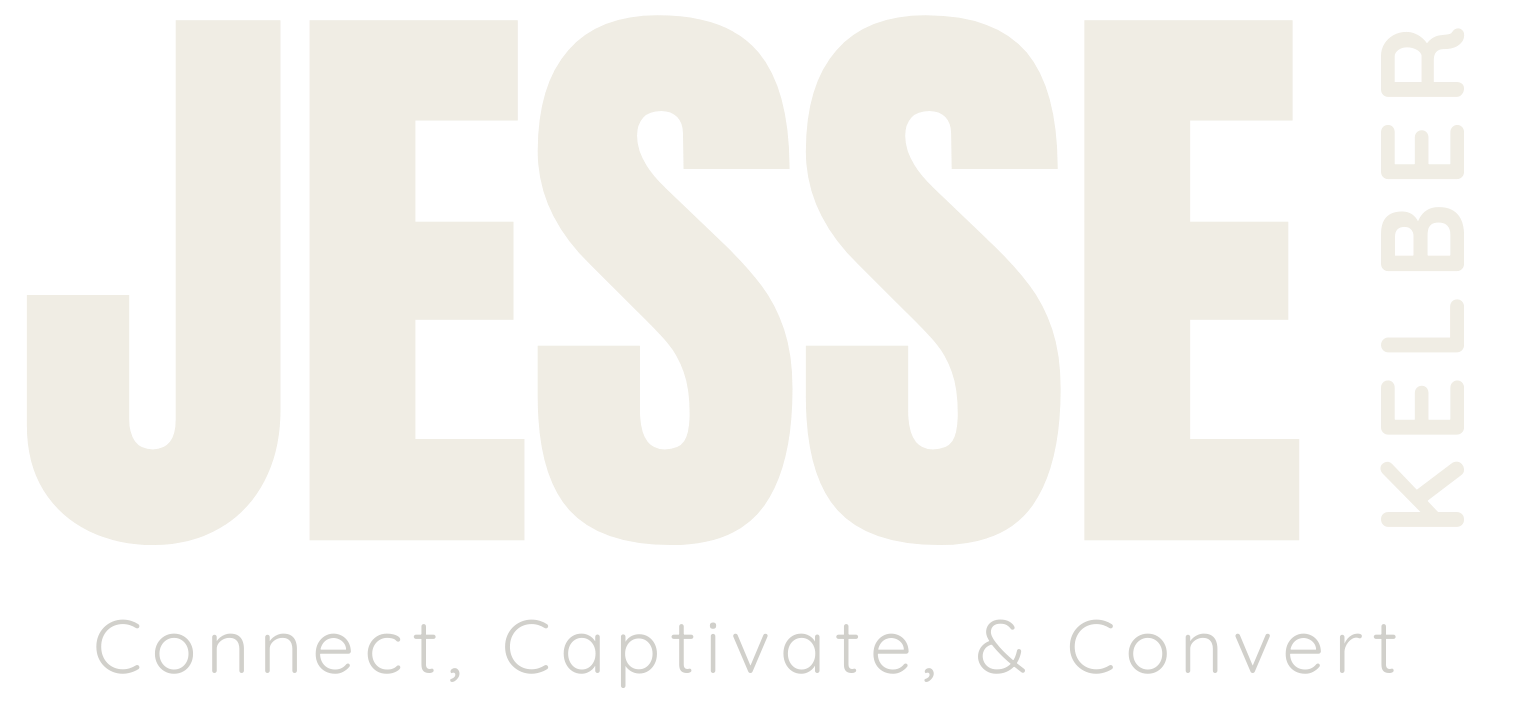Quick Tips Tuesday: 5 common mistakes founders make when writing their own content and how to fix them

It’s 11:00 on a Wednesday night. You’re sitting in a dark room, staring at a blank document. You’re watching as the cursor just…blinks. Like it’s daring you to write something. But despite the merciless taunting, you just can’t seem to magic the words into the right order. It’s the dreaded ‘blinking cursor,’ or ‘blank page’ syndrome that all writers know so very, very well. But you’re not a writer. You’re a startup founder, CEO, CTO, and acting COO who really needs to get this blog post written and posted so you can reference it in a shareholder meeting first thing in the morning. Did you just Google “how to sound smart but not pretentious” again? You did, didn’t you? The struggle may be real, but it doesn’t have to hurt this much. Truth is, most founders who try to wear too many hats often end up with one that has a “writer” label tucked under the band like a modern-day “Press” badge. Writing for a dedicated audience requires a skill set. Is it one you possess? I would hazard a guess and say no. Nestled there amongst your dozen or so deeply impressive skill sets is not a bag containing the tools you need to effectively reach your audience with the facts and figures you want them to know. So what’s a founder/CEO/CTO/COO/apparent Head of Content to do? The good news is that these struggles follow predictable patterns, which means they have predictable solutions. Read on to see if any of these five common mistakes startups make when writing their own content sound familiar. Then see if you can implement the solution given and get ready for a revolution in your content production. 1. Lack of focus: Ensure your content has a clear purpose The problem: I’m starting with the biggest, and sadly most common, error I see when a founder tries to create a content program from scratch—an utter lack of focus. The blog page reads like a monkey coming down off a three-day sugar bender wrote it, each piece bearing little to no resemblance to any other post…or even tangentially to the company’s industry or vertical. Shotgunning content onto various platforms may get your name out there, but not for the right reasons. You’ll become know for your scattershot way of doing things, which will be interpreted as how you do business overall and kill potential leads. Without a clear goal for each piece, your audience will abandon the noise on your channel for one with more signal provided by one of your competitors. The Solution: Before sitting down in front of that cursor, define what success looks like for each piece you intend to write. Is the goal to drive conversions? Nurture existing prospects? Show some love to your existing clients? Establish your industry chops? Each and every sentence you write going forward should be aiming your content directly at that goal. Get all this recorded somewhere. I recommend fields in your editorial calendar where you track target audience, calls-to-action, etc… In other words, if you’re aiming for conversions, don’t write about industry news. If your target is brand awareness, don’t get bogged down in your latest production numbers. And if you want your customers to know how much you love them, for pity’s sake don’t write about how much your new product will disrupt all existing models…including your old one. 2. Overcomplicated language: Remember the KISS rule – Keep It Simple…Silly The Problem: There’s a line between sounding smart and being helpful. Some founders walk that line successfully, making it clear with their writing that not only do they know their stuff, they’re humble enough to understand that not everybody will be at the same level of expertise with their topic. Others…well I’m sure you’ve read those pieces, the ones where you find yourself re-reading a paragraph multiple times trying to parse one particularly problematic sentence. The “look how clever I am” approach backfires because most readers just want to read about a solution to the pressing problem they’re having. They don’t want a masterclass in industry jargon and techbro aphorisms. When you spend too much screen real estate conveying how mightly your vocabulary is, you risk those big words piling up into a wall between your expertise and the people who came to you for solutions. The Solution: Write like you’re explaining it to your uncle over coffee. Or niece. Or someone else in your life who isn’t technical and doesn’t really care what you do all day. This approach will lead to cutting the jargon, shortening the sentences, and creating easily digestible chunks of information rather than the gristly mess you had initially. By prioritizing clarity over cleverness, you’re cutting down on the complexity without lessening the impact your words can have on your audience. Plain language doesn’t have to be simple language, I’m not asking you to dumb down your writing—rather I’m asking you to use all the cleverness you can muster to explain a complex issue clearly and concisely. This is a task many find much harder than spewing a thesaurus-worth of tech-speak and jargon. Bonus points if you send a draft to that uncle/niece/whoever for feedback before hitting publish. 3. Winging it: Tracking metrics can help improve content, too The Problem: Content is not like spaghetti—throwing it at the wall won’t help you determine what will stick with your readers. It’s also not much like Costco, in that producing content in bulk won’t help if you don’t know what’s sticking. Without some amount of metrics tracking, you can publish as consistently as anyone, pumping out lengthy educational blogs and engaging topic explainers and still end up with zero conversions and lackluster click-through rates. The key to this mistake is that people don’t always associate words, which they view as subjective, with metrics, which they see as more objective. And they’re not wrong. Where these folks are erring is in assuming you can’t track subjectivity. The Solution: You have to select
Stop letting engaging content languish in obscurity: How to repurpose blog content like a pro

You’ve done the hard work of creating a content program for yourself. You’ve even got yourself a shiny editorial calendar so you can feel the satisfaction of marking each article POSTED and watch as those little green tick marks stack up (It’s really satisfying, isn’t it?!). What comes next for your wonderful, engaging content after it endears you to your blog readers? Nothing, huh? What if I told you there was an easy way to extend the viable lifespan of your blog posts by, I don’t know, let’s say 3x? 5x? Yeah, that’s what I’m saying here. It’s all about repurposing. Before continuing, take 5 minutes to look through your site stats and pick one high-performing piece of content. I’ll wait. It’s OK to be picky here, in fact, it’s preferable. Not every piece of writing needs to be repurposed. Actually, many pieces I’ve stumbled upon over the years served their purpose in one fell swoop and can rest easy in retirement. We’re looking for the ones that stand out. The articles that got your readers excited about your widget. Or that started a heated debate down in the comment section. Got one? Cool. Let’s do this. A little something for the skimmers If the piece you’ve selected is longer than 1,000 words or so, good on ya! Now, take each section and move to a new draft document. Add a one-sentence intro, and congratulations! You now have a series for LinkedIn. Each one can link back to your main article (in the comments, I’m pretty sure they’ll dock you for linking directly from a post) and provide a great forum for more engagement with your audience on a different platform. Trim it a little further…a little further…there it is! Now take those shorts and trim out the sound bites. Look for quotes that cover the basics of the broader topic and/or that highlight your expertise just right to draw in eyeballs on social media. We’re looking for bite-sized nuggets of goodness here, no more than two short paragraphs with bonus points if you can include a relevant meme. Yes, even B2B folks secretly (or not so secretly) love a good meme. Thou shalt not forsake that old standby, the inbox Take that article and generate a two-paragraph summary (more bonus points if you can reuse one of the blurbs from the first section here). Now add a meme or two from the second section, sprinkle in a company update and product teaser, and you have yourself a newsletter. Mazal Tov. Newsletters are awesome for many reasons. Today let’s focus on two primary things: reminding folks you’re there (brand awareness or trickle marketing) by hitting them where they already spend hours a day, email; and giving you more opportunities to link back to your pillar pages, product landing pages, and the full version of that amazing blog post that started this. Turn your Q&A into an FAQ: different acronym, same result More content, that is. Take the questions your readers left in the comments on the original blog, add your witty and erudite responses, and just like that, you have an entry for your FAQ page. You’re being proactive, while giving yourself more content to link people to when they ask the same question you’ve already answered multiple times. The infographic: For those who can’t even take the time to skim Condense the big ideas from that blog post into a visual for your audience who can’t even take the time to read the summaries. That’s not fair, they’re probably busy, just like you are, so providing a way to convey your main points in a format they can take in with limited time will go a long way to endearing you with your audience and ensuring they reach out when they need your widget. Besides, it’s a great way to prove that a picture is truly worth a thousand words. The humble case study: doing the heavy lifting of providing social proof OK, this one might be a stretch depending on what the article you picked actually covers. You have customers who already love you, and you should be talking about them. Pull those bits out of the original article and bulk it up with some quotes about how much they love your company. Show them you love them right back by crafting short, to-the-point stories that highlight not your widget, but how your customers are using it to increase their own businesses. Be sure to get their permission before posting, of course. Podcast clips: For your readers who prefer to listen Extract the best bits of your article and record them as audio clips or combine them into full podcast episodes. Perfect for your audience’s morning commute or while they’re doing the break room dishes because no one else ever does them. Next time you realize a high-performing blog post is just sitting there, languishing on the second or third page of your blog, no longer getting the hits it once did, dust that bad boy off and repurpose it for more engagement with your audience. Don’t even get me started on ways to reuse longer pieces like whitepapers and eguides, those will be getting their own treatment here on Strategic Narratives soon. Until then, happy repurposing!
5 Counter-Intuitive Questions Every Startup Founder Should Ask Before Writing Their First (or Fortieth) Blog Post

There’s a condition that gets little media attention but is rampant in online writing: Blinking Cursor Syndrome. It has a slightly less common subtype I call Blank Page Overload. This condition is especially prevalent among those who need to write online but who don’t have a background in, or training specific to, writing as a discipline. In my ongoing attempt to rid my clients of such scourges and to enable them to write to their heart’s content, today I offer a selection of my favorite slightly off-base questions you can ask yourself should you find yourself staring down the dreaded Blinking Cursor of Doom or even the Blank Page of Discontent. “What’s one contrarian thing I believe about my industry that no one else is willing to admit?” This one’s not so much about the writing directly, it’s more about forcing yourself to think about what you do from a different perspective. (Ed note: I’m a massive proponent of forcing yourself outside your comfort zone when it comes to “conventional wisdom,” as I find it all too often to be neither) The idea behind asking yourself this question is to push yourself to identify a unique insight or belief that your audience will benefit from understanding. It can be something that challenges the status quo in your industry, or something more specific to the way your product works its magic. The point is to show off your expertise in a way that also positions you as the thought leader to watch. Examples: “Most cybersecurity startups focus on selling fear, but I believe educating users on simple, proactive habits is a more realistic way to generate sustainable risk mitigation behaviors.” “In fintech, the current obsession with AI-this and automated-that is leading to people overlooking the value of human expertise in managing complex scenarios.” “If I had to convince someone of the opposite of what I believe about my product, what would I say?” This one’s all about critical thinking. If you can plan ahead and know what objections your audience is likely to raise, you can have your rebuttal ready to go. Crafting compelling, nuanced content that pre-addresses skeptics shows that not only do you know your stuff, you know your audience—maybe a little better than they do. Examples: “Our SaaS platform might be too complex for small businesses and better suited for enterprises with dedicated IT teams.” “The wellness tech market is oversaturated, and many apps don’t actually improve mental health—they just add to screen time.” “Which failure or mistake in my startup journey could be a valuable lesson for others, and how can I tell that story?” Nothing builds trust like transparency, especially when it shows your human side. Many people in your audience probably have a skewed view of what a tech founder is like, behind the curtains, so to speak. Putting your foibles (the ones that relate to your business, that is, TMI is real, folks) on display for others to learn from can go a long way toward building trust and authenticity. Examples: “We launched before validating the core problem with real customers, which cost us months of re-development time.” “Trying to scale too quickly before our product-market fit was solid led to cash flow problems and team burnout.” “What’s a customer pain point that we can’t solve yet, and what are we doing about it?” Contrary to popular belief (in some circles anyway), putting your limitations on display shows a great deal of strength and knowledge about the inner working of your product, not to mention your audience. Falling under the heading of transparency again, this question forces you to address those limitations for all to see—as long as you remember to tell them what you’re doing to solve things. Examples: “We don’t yet support integrations with legacy ERP systems, however, our library of integrations is growing every week, and we’re on track to incorporate the last of these systems by the end of this year.” “Our cybersecurity tool doesn’t prevent insider threats effectively, and we’re transparent about the need for complementary solutions.” “What’s a story from outside my industry that illustrates a problem my audience faces?” Sticking to the idea of addressing pain points, this question forces you to think laterally (anyone else hate that phrase? No? Just me, then.) about problem solving. Non-sequiturs are memorable, so drawing unexpected parallels can jolt your readers into remembering your content and, by extension, your name. It also demonstrates that you’re a creative thinker, not just another pretty face. Examples: “How a small-town coffee shop’s personalized customer service offers lessons for SaaS companies struggling with user retention.” “The rise and fall of a popular fitness influencer shows the dangers of overpromising and underdelivering in wellness marketing.” BONUS: “How would I explain our value proposition to a 10-year-old?” It’s pretty common for startup value props to be…how to say this politely…jargony, fluffy, jingoistic, and nonsensical. Thinking about it as though you were describing your product to your niece, nephew, or friend’s kid forces you to simplify not only your words but also your thinking—and that’s how you connect with a wider audience. Examples: “Imagine you have a big box of toys, but you don’t know where your favorite ones are. Our app helps you find the toys you want quickly, so you can spend more time playing.” “We make sure your computer is safe from bad guys, kind of like how a superhero protects a city from villains.”
Is Content Still King in 2025? What Startups Need to Know

Content Marketing sure ain’t what it used to be. What started as blog posts and landing pages has morphed and expanded into multi-media and multi-channel campaign strategies. Don’t even get me started on the impact AI and AI-driven this-and-that are having. When Bill Gates coined the term “content is king” back in 1996, he had a good point. At that time, if you wanted your message to get traction, you needed to be sure it was posted in all the places. Well-written content, posted where your audience would see it, was indeed key to generating traffic and converting browsers to buyers. But what about in 2025? Where should you put your marketing budget: on blog posts, Instagram reels, LinkedIn ads, or guest spots on industry podcasts? Would it annoy you if I said the short answer was “Yes”? Let’s look at some arguments for and against the premise that “content is king,” starting with what may seem like a counterintuitive one—there’s just too much content out there. Content is dead, long live content We’ve reached content saturation It’s estimated that 4.6 billion pieces of content are published every day. Read that number again, and yes, that’s billion with a ‘b.’ We’ve hit saturation and are quickly heading toward complete overload when it comes to content on the internet. And AI tools like ChatGPT are enabling some people to generate that content at a speed heretofore unseen. Despite that, and despite the sheer overwhelming quantity of information available, efficient, human-written content generates more than 5x the traffic over time. It’s simply being overshadowed by the speed and scale of AI-generated slop. Search behavior has changed over time Content marketing guru Neil Patel has declared that SEO now stands for “Search Everywhere Optimization.” With platforms like TikTok and Instagram pushing short-form video to the top of the search engine results pages, many are no longer relying solely on long-form written content like blogs or whitepapers. That’s not to say you should shift your focus entirely over to the currently trending format—rather that you should be aware of where your audience is spending their time online and put yourself in front of them in the right format for each platform. Content rarely drives purchasing decisions Content is a long game. The vast majority of consumer purchases aren’t influenced by branded content as these decisions are made in-store and in the moment. The return of brick-and-mortar shopping is having an impact on the content marketing choices many consumer brands are making. Content is the once and future king Content is a long game Most marketing efforts are focused on the moment they’re occurring in. Lines like “Buy now!” or “Don’t miss out!” are all about getting someone to convert and make a purchase—in the moment. Content marketing, on the other hand, is a long-term strategy. By adjusting your keyword use, giving folks insights they won’t get elsewhere, and nurturing your audience relationships, you’re setting yourself and your brand up for years of success, just not necessarily in the next week. Or month, maybe. What you’re building is compounding returns instead of immediate. Humans like human content Without going too far into the weeds surrounding the human vs. AI debate, a recent study from the Marketing Insider Group found that human-generated content excelled at the aspects of content that matter here: trustworthiness, authenticity, and creativity. When it comes to tailoring your content to your audience, nothing beats an audience-centric strategy and no one does that better than a human writer. Trust and authority building, FTW One of the largest, and least understood, bits of building SEO credibility is trustworthiness and domain authority. Each of these is a large enough topic to warrant separate posts by SEO experts (which I am not)—what’s key is to understand that humans inherently trust other humans. High-quality content like how-to guides, explainers, case studies, and whitepapers all go a long way toward building trust and respect with your audience. And it’s that trust that will keep them coming back to your site, in turn boosting your brand reputation with the search engines. Content is still king, but it’s sharing the throne with context Despite changes in technology and user behavior, content remains a cornerstone of digital marketing because it drives organic traffic, builds trust, and positions brands as thought leaders. Search engines still prioritize high-quality content for ranking purposes, making blogs, whitepapers, and case studies essential for SEO. Furthermore, content serves as the foundation for audience engagement across channels—whether it’s a compelling story shared on social media or an informative video that educates potential customers. As long as businesses aim to solve problems and connect with their audiences, content will continue to play a vital role in achieving those goals. That said, to stay competitive in 2025 and beyond, organizations of all sizes must adapt their content strategies to emerging trends while staying true to their brand voice. Short-form video content is dominating platforms like TikTok and YouTube Shorts, while AI tools are enabling faster production of personalized materials at scale. Interactive formats such as quizzes or calculators are gaining popularity for engaging users directly. Meanwhile, startups should also focus on repurposing pillar content into multiple formats—turning a single whitepaper into blog posts, infographics, videos, and social media snippets—to maximize reach without overextending resources. It’s about finding your audience where they are, then putting the content you want them to see in the right format to hit them where it counts. By embracing innovation while prioritizing audience needs, you can ensure your content remains impactful in a rapidly changing business environment and consumer landscape. Reach out to find out how I can help wrangle some context for your content!
